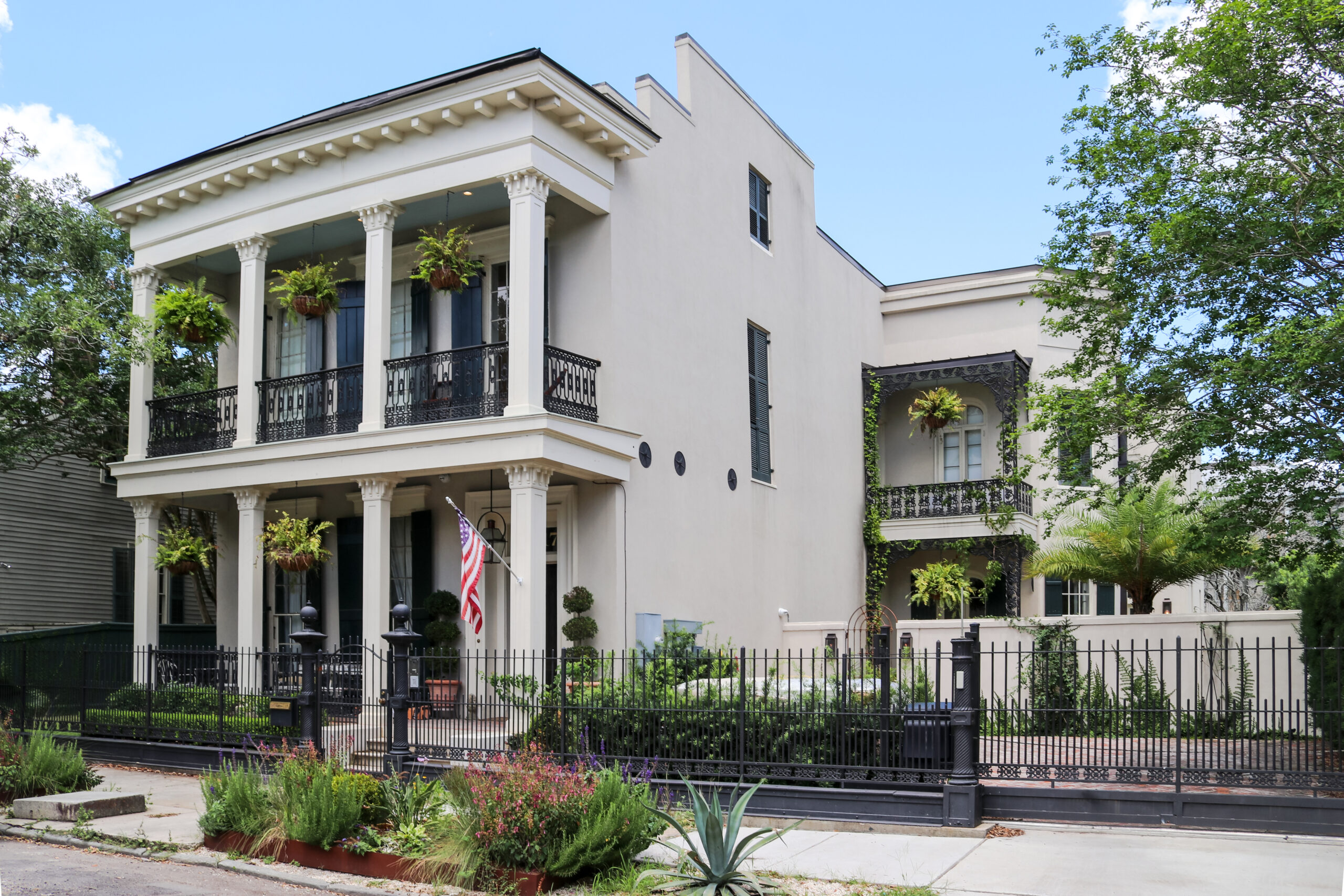The Lower Garden District is a diverse neighborhood whose streets are alive with passionate residents who love where they live. The community is especially convenient with proximity to the amenities of both Uptown and the Central Business District. (The city’s skyline and the lights of the Mississippi River Bridge can be seen from the second and third floors of homes and apartments above Magazine Street’s bustling businesses.) The neighborhood is filled with historic churches that rival the cathedrals of Europe and old-world artisans and service providers who operate shops within the community.
Laid out in 1806-07 by Barthelemy Lafon as an open, semi-urban system of interrelated parks with basins, fountains and canals, the Lower Garden District was “one of the earliest expressions of the Greek Revival to appear in New Orleans,” wrote noted architect Samuel Wilson, Jr. The streets still bear the names of the nine muses of Greek mythology, and many of the mid-19th century Greek Revival and Italianate homes built in this classical setting remain. German and Irish immigrants began to populate the neighborhood in the 1840s, defining the area for many generations. During the Great Depression, many of the mansions turned into boarding houses and apartments. The neighborhood then declined as many residents moved to the suburbs after WWII to take advantage of lower government-insured mortgages that were not available to most inner-city homebuyers due to racist redlining practices. The construction of the Mississippi River Bridge in 1956 fostered further decline, as an on-ramp was constructed over a neighborhood park and commuter traffic clogged the streets.
In the 1970s, a blossoming preservation movement brought new residents to the neighborhood, attracted by the historic homes in a park-like setting. They began buying the mansions on and around Coliseum Square Park and reverting them back to single-family homes. When the State of Louisiana announced plans for a second bridge between Race and Felicity streets, these residents fought the proposal, placed the neighborhood on the National Register of Historic Places in 1974, and defeated the second span that same year. Thanks to their tireless efforts, the Camp Street bridge ramp was removed in 1994. Preservation of the neighborhood has been further bolstered by the publication of the Friends of the Cabildo’s book, New Orleans Architecture Vol. 1, The Lower Garden District, bringing greater public awareness to the area’s historic design, and by the Preservation Resource Center’s efforts in the late 1980s and 1990s to revitalize swaths of the neighborhood, making homeownership and renovations more accessible to new residents.
Newcomers continue to preserve this important historic neighborhood. The population continues to grow, and property values are higher than ever. The area remains diverse, with a mixture of young and old, families and single people, mansions and affordable housing, all living amongst schools, churches, shops, and all that the Lower Garden District has to offer.



